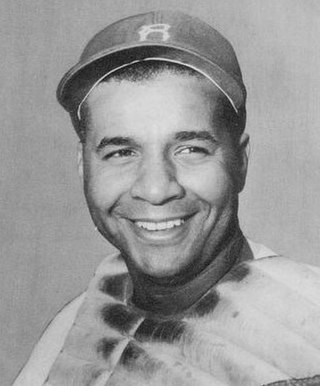
Roy Campanella, nicknamed "Campy", was an American baseball player, primarily as a catcher. The Philadelphia native played in the Negro leagues and Mexican League for nine years before entering the minor leagues in 1946. He made his Major League Baseball (MLB) debut in 1948 for the Brooklyn Dodgers, for whom he played until 1957. His playing career ended when he was paralyzed in an automobile accident in January 1958. He is considered one of the greatest catchers in the history of the game.
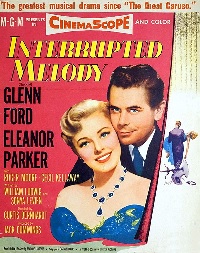
Interrupted Melody is a 1955 biographical musical film, filmed in CinemaScope and Eastman Color, directed by Curtis Bernhardt and starring Glenn Ford, Eleanor Parker, Roger Moore, and Cecil Kellaway. The film was produced for Metro-Goldwyn-Mayer by Jack Cummings from a screenplay by Australian soprano Marjorie Lawrence, Sonya Levien, and William Ludwig. It tells the story of Lawrence's rise to fame as an opera singer and her subsequent triumph over polio, with her husband's help. The operatic sequences were staged by Vladimir Rosing, and Eileen Farrell provided the singing voice for Parker.
Isadore "Dore" Schary was an American playwright, director, and producer for the stage and a prolific screenwriter and producer of motion pictures. He directed just one feature film, Act One, the film biography of his friend, playwright and theater director Moss Hart. He became head of production at Metro-Goldwyn-Mayer and replaced Louis B. Mayer as president of the studio in 1951.
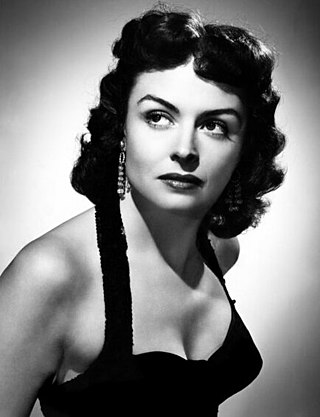
Donna Reed was an American actress. Her career spanned more than 40 years, with performances in more than 40 films. She is well known for her portrayal of Mary Hatch Bailey in Frank Capra's fantasy holiday film It's a Wonderful Life (1946). Reed won the Academy Award for Best Supporting Actress for Fred Zinnemann's war drama film From Here to Eternity (1953).

Robert Burgess Aldrich was an American film director, producer, screenwriter and assistant director. A maverick director working in a myriad of genres, he worked mainly in film noir, war movies, westerns and dark melodramas with Gothic overtones. His notable credits include Vera Cruz (1954), Kiss Me Deadly (1955), The Big Knife (1955), Autumn Leaves (1956), Attack (1956), What Ever Happened to Baby Jane? (1962), Hush...Hush, Sweet Charlotte (1964), The Flight of the Phoenix (1965), The Dirty Dozen (1967), and The Longest Yard (1974).

Ralph Meeker was an American film, stage, and television actor. He first rose to prominence for his roles in the Broadway productions of Mister Roberts (1948–1951) and Picnic (1953), the former of which earned him a Theatre World Award for his performance. In film, Meeker is perhaps best known for his portrayal of Mike Hammer in Robert Aldrich's 1955 Kiss Me Deadly.

John Bernard "Hans" Lobert was an American third baseman, shortstop, coach, manager and scout in Major League Baseball. Lobert was immortalized in the 1953 film Big Leaguer and in the 1966 Lawrence Ritter book The Glory of Their Times.
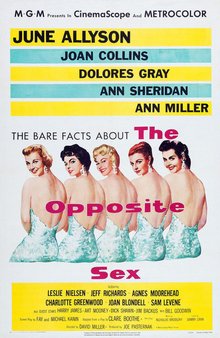
The Opposite Sex is a 1956 American musical romantic comedy film shot in Metrocolor and CinemaScope. The film was directed by David Miller and stars June Allyson, Joan Collins, Dolores Gray, Ann Sheridan, and Ann Miller, with Leslie Nielsen, Jeff Richards, Agnes Moorehead, Charlotte Greenwood, Joan Blondell, and Sam Levene.

John Lund was an American film, stage, and radio actor who is probably best remembered for his role in the film A Foreign Affair (1948) and a dual role in To Each His Own (1946).

Jeff Richards was an American minor league baseball player with the Portland Beavers, who later became an actor. He was sometimes credited as Dick Taylor and Richard Taylor.

Shirley Ann Richards was an Australian actress and author, who achieved notability in a series of 1930s Australian films for Ken G. Hall before moving to the United States, where she continued her career as a film actress, mainly as a Metro-Goldwyn-Mayer starlet. Her best known performances were in It Isn't Done (1937), Dad and Dave Come to Town (1938), An American Romance (1944), and Sorry, Wrong Number (1948). In the 1930s, she was the only Australian actor under a long-term contract to a film studio, Cinesound Productions. She subsequently became a lecturer and poet.
Leonard Spigelgass was an American film producer and screenwriter.
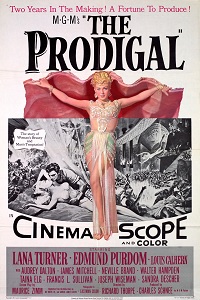
The Prodigal is a 1955 Eastmancolor biblical epic CinemaScope film made by MGM starring Lana Turner and Edmund Purdom. It was based on the New Testament parable about a selfish son who leaves his family to pursue a life of pleasure. The film also features James Mitchell, Louis Calhern, Joseph Wiseman, Cecil Kellaway, Audrey Dalton, and Walter Hampden. Dancer Taina Elg made her film debut in The Prodigal.
Charles Schnee was a screenwriter and film producer. He wrote the scripts for the Westerns Red River (1948) and The Furies (1950), the social melodrama They Live by Night (1949), and the cynical Hollywood saga The Bad and the Beautiful (1952), for which he won an Academy Award.
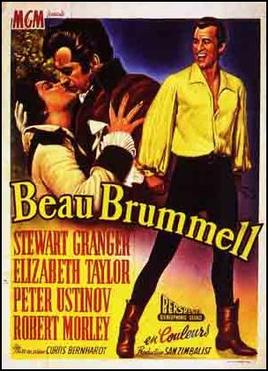
Beau Brummell is a 1954 British historical film released by Metro-Goldwyn-Mayer. It was directed by Curtis Bernhardt and produced by Sam Zimbalist from a screenplay by Karl Tunberg, based on the 1890 play Beau Brummell by Clyde Fitch. The play was previously adapted as a silent film made in 1924 and starring John Barrymore as Beau Brummell, Mary Astor, and Willard Louis as the Prince of Wales.

Million Dollar Mermaid is a 1952 American biographical drama film about the life of Australian swimming star Annette Kellerman. It was directed by Mervyn LeRoy and produced by Arthur Hornblow Jr. from a screenplay by Everett Freeman. The music score was by Adolph Deutsch, the cinematography by George Folsey and the choreography by Busby Berkeley.

All the Brothers Were Valiant is a 1953 Technicolor adventure drama film produced by Metro-Goldwyn-Mayer and directed by Richard Thorpe. The film's screenplay was written by Harry Brown and based on the 1919 novel All the Brothers Were Valiant by Ben Ames Williams. The music score was led by Miklós Rózsa and the cinematography by George J. Folsey.
Earl Felton (1909–1972) was an American screenwriter.

The Kid from Left Field is a 1979 American made-for-television baseball comedy film starring Gary Coleman and Robert Guillaume. Coleman's first film, it is a remake of the 1953 film of the same name.
Matthew Rapf was an American film and television producer and screenwriter. He was best known for producing The Loretta Young Show, Ben Casey, and Kojak.















